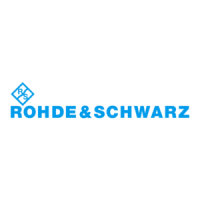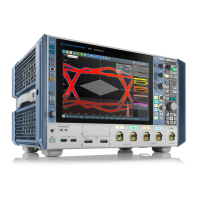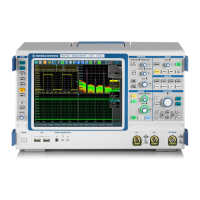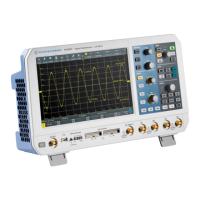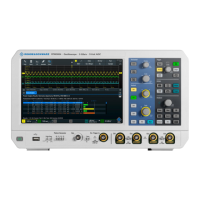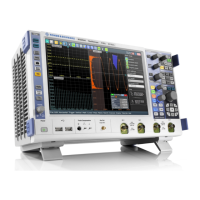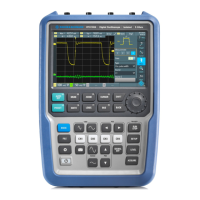Protocol analysis
R&S
®
RTE
788User Manual 1326.1032.02 ─ 20
Note: For triggering on a custom serial bus, analog input channels are required.
5. Switch back to the "Decode" tab.
6. Tap "Coding Standard" and select the coding ("Manchester", "Manchester II", "NRZ
Clocked", or "NRZ Unclocked") you want to set up.
7. Select the polarity and phase of the data signal (and potentially of the clock signal).
8. Set the logical thresholds. See "Set Thresholds" on page 773.
9. Enable "Decode".
10. Switch to the "Format" tab and open or create frame format descriptions.
For details on configuration settings, see Chapter 13.14.2.1, "Custom: Manchester /
NRZ configuration settings", on page 768.
13.14.3 Custom: Manchester / NRZ trigger
If you need information on how to get started with triggering on Custom serial bus sig-
nals, see Chapter 13.14.3.2, "Triggering on custom Manchester / NRZ serial bus",
on page 793. Otherwise proceed with the Custom serial bus trigger settings.
13.14.3.1 Custom: Manchester / NRZ trigger settings
Access: [PROTOCOL] > "Trigger" tab > "Source = Serial Bus" > select "Protocol =
Custom"
In this section, all trigger settings are described. Their availability on the instrument
depends on the selected coding standard and trigger type. The user interface of the
instrument displays only appropriate settings and guides you through the trigger setup.
You can adjust the "Gap time" and "Bit rate" also in the "Trigger" tab if necessary.
For a list of supported trigger conditions, refer to the data sheet.
Custom: Manchester / NRZ (option R&S RTE-K50)M
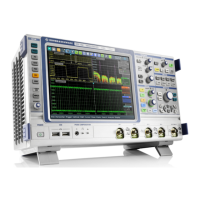
